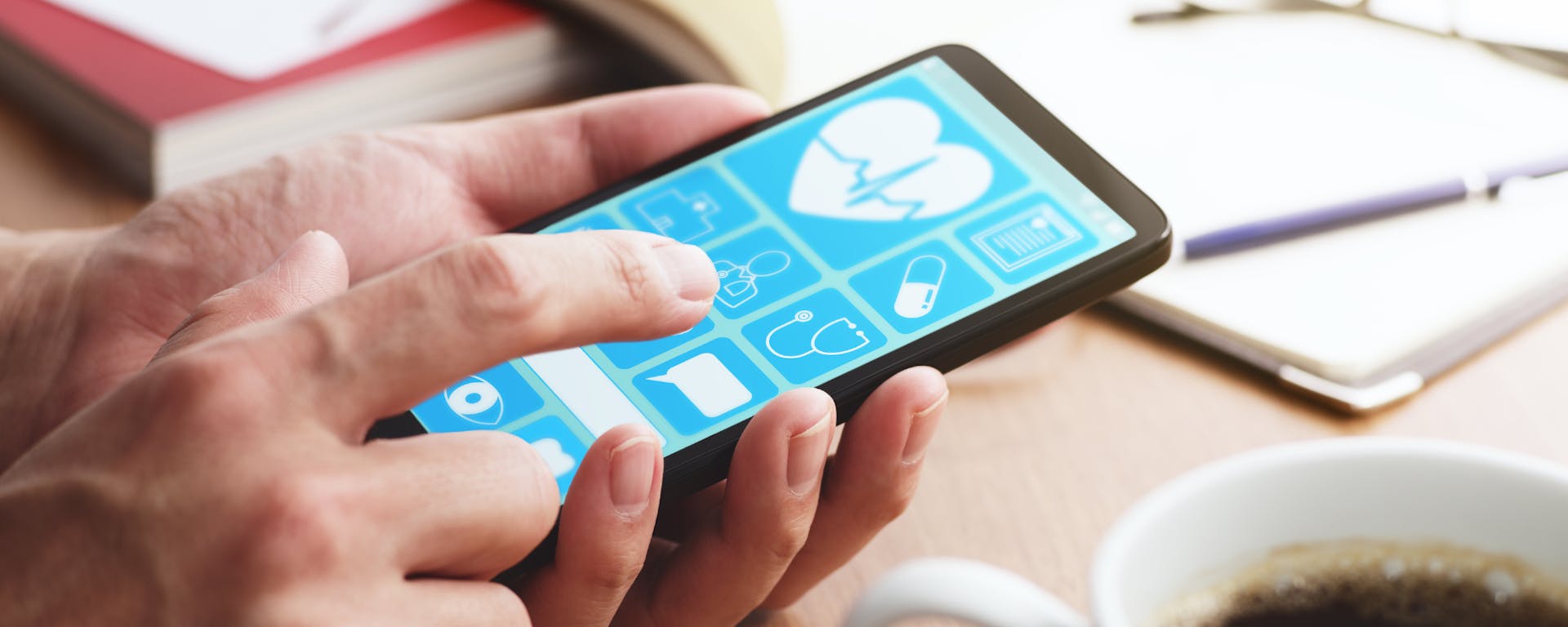If you work in healthcare or you manage a healthcare company, you probably know how important communication is, as well as security and compliance.
This article explores 10 essential healthcare call center best practices and trends and highlights the challenges that healthcare facilities must consider to maximize the technology’s potential.
Key Takeaways:
- Modern healthcare call centers are turning to VoIP technology to boost internal collaboration, patient communication, and remote care. This shift not only improves speed and clarity but also helps reduce operational costs.
- Healthcare VoIP systems must prioritize HIPAA compliance, data security, and patient satisfaction. Features like encrypted calls, 24/7 support, and automated reminders directly impact trust, care quality, and retention.
- VoIP solutions like PBX.IM offer scalable communication tools, automation, and remote flexibility all crucial for reducing staff burnout, improving emergency response, and adapting to evolving patient needs.
10 essential healthcare call center best practices
As medical facilities face the challenges of patient demands, staff shortages, and cost management, Voice over Internet Protocol (VoIP) technology has emerged as a transformative tool. VoIP for healthcare offers numerous advantages, from enhancing internal communication to improving patient satisfaction, while also addressing key pain points. Let's go in depth to see exactly what pain points can be solved and how.
1. Enhanced communication and collaboration
Effective communication is the backbone of any successful healthcare facility. VoIP technology significantly enhances both internal and external communication, ensuring that healthcare teams can collaborate efficiently.
Seamless internal communication
VoIP systems enable real-time collaboration through features like instant messaging, group calls, and video conferencing. These tools allow healthcare professionals to share information quickly, make informed decisions, and coordinate patient care effectively.
Example: A multidisciplinary team can conduct virtual meetings to discuss patient cases, ensuring that all specialists are involved and up-to-date.
Efficient external communication
VoIP facilitates clear and reliable communication with patients, families, and external partners. High-quality voice and video calls ensure that crucial information is conveyed accurately, improving patient satisfaction.
Example: Healthcare providers can easily connect with external laboratories and pharmacies to coordinate care, verify prescriptions, and share test results promptly.
What pain point does this solve? Reliance on internet connectivity
VoIP’s performance is heavily dependent on stable, high-speed internet connectivity. In areas with poor internet service, communication may be hindered, affecting the quality of care. To mitigate this, PBX.IM systems offer optimized call routing and redundancy measures to maintain service reliability.
2. Cost efficiency and savings
VoIP technology offers significant cost savings, making it an attractive option for healthcare organizations aiming to manage operational expenses effectively.
Reduced call and infrastructure costs
Healthcare call centers use the internet for communication, significantly lowering long-distance and international call charges. Additionally, it eliminates the need for separate voice and data networks, reducing infrastructure and maintenance costs.
Example: A hospital network with multiple locations can save on communication expenses by routing all calls through a centralized VoIP system, enabling free or low-cost internal calls.
Lower equipment and maintenance expenses
VoIP systems require less physical hardware and are easier to install and maintain. Updates and configurations can often be managed remotely, minimizing downtime and reducing the need for on-site technical support.
What pain point does this solve? Complexity and training
One of the most crucial healthcare call center best practices is to implement a VoIP system that won't be complex, and staff may require minimal training to utilize all features effectively. PBX.IM systems offer intuitive interfaces and comprehensive support resources to ensure a smooth transition and maximize efficiency.
3. Support for telemedicine and remote care
Telemedicine has become a cornerstone of modern healthcare delivery, and VoIP plays a crucial role in enabling and enhancing remote care services.
High-quality virtual consultations
VoIP supports high-definition voice and video communications, facilitating effective virtual consultations between healthcare providers and patients. This technology ensures that remote interactions maintain the quality of in-person visits.
Example: Patients in rural areas can access specialist consultations without the need for travel, receiving timely diagnoses and treatment recommendations through secure VoIP-enabled platforms.
Remote monitoring and follow-ups
Healthcare professionals can use VoIP systems to monitor patients remotely, conduct follow-up appointments, and provide ongoing support, improving patient outcomes and reducing hospital readmissions.
Example: Chronic disease management becomes more effective as doctors can regularly check in with patients and adjust treatment plans via VoIP-enabled platforms.
What pain point does this solve? Emergency calls and power outages
Unlike traditional phone systems, VoIP services can be disrupted during power outages unless supported by emergency power solutions. PBX.IM offers power backup and failover protocols to ensure uninterrupted service.
4. Improved patient accessibility and experience
Patient-centred care is at the heart of modern healthcare. VoIP technology enhances patient accessibility and experience through user-friendly features. The most popular healthcare call center trend is to make it as smooth as possible for your patients.
Simplified appointment scheduling and reminders
VoIP systems can integrate automated appointment scheduling and reminder functionalities, reducing no-show rates and improving clinic efficiency. Patients can easily book, confirm, or reschedule appointments through interactive voice response (IVR) systems.
Example: Automated reminders help patients keep track of upcoming appointments, ensuring better adherence to treatment plans.

24/7 Availability and support
VoIP enables healthcare providers to offer round-the-clock support, addressing patient inquiries and emergencies at any time. Call forwarding and voicemail-to-email features ensure that critical messages are received and acted upon promptly.
What pain point does this solve?: Security concerns
The transmission of sensitive patient information over the internet requires stringent security measures to protect data from breaches and comply with HIPAA regulations. PBX.IM provides secure VoIP features and addresses these concerns. Sensitive information is secured, with features like encryption, role-based access, two-factor authentication, and compliance with HIPAA, ISO27001, and GDPR.
5. Scalability and flexibility
Healthcare organizations often face changes in size and service demands. VoIP systems offer the scalability and flexibility needed to adapt to these fluctuations seamlessly.
Easy expansion and adaptation
Adding new users, extensions, or features to a VoIP system is straightforward and cost-effective. Whether expanding services or opening new clinics, the communication infrastructure can quickly adapt to meet new needs.
Example: During a health crisis or seasonal influx of patients, a hospital can temporarily increase its communication capacity without significant investments or delays.
Support for the mobile and remote workforce
VoIP supports mobility by allowing healthcare professionals to access the communication system from various devices, including smartphones, tablets, and laptops. This flexibility supports remote work arrangements and on-the-go connectivity.
Example: Home health nurses can stay connected with central offices and other team members while visiting patients, coordinating care efficiently through mobile VoIP applications.
6. Integration with healthcare systems and applications
Interoperability between systems is vital for efficient healthcare operations. VoIP systems can seamlessly integrate with various healthcare applications and technologies.
Electronic Health Records (EHR) integration
"VoIP can be integrated with electronic health records (EHRs) and other healthcare software. This integration allows for seamless communication and data exchange between healthcare professionals", streamlining workflows and reducing administrative burdens.
Example: While on a call with a patient, a doctor can quickly review medical history, document new information, and set follow-up reminders within the same interface.
Compatibility with Customer Relationship Management (CRM) systems
Integrating VoIP with CRM systems enhances patient relationship management by consolidating communication records, tracking interactions, and facilitating personalized care.
Example: Administrative staff can view a patient's communication history, preferences, and previous inquiries, providing tailored support and improving patient satisfaction.
What pain point does this solve? Reliance on internet connectivity
For seamless integration with other systems, stable and reliable internet connectivity is crucial. PBX.IM system ensures this through optimized network management and redundancy.

PBX.IM offers customized solutions tailored specifically for healthcare. Discover how we can elevate your communications and provide additional benefits aligned with current trends!
7. Robust data security and compliance
Protecting patient information is a legal and ethical imperative in healthcare. VoIP systems offer robust security features to ensure data protection and compliance with regulations.
Encryption and secure data transmission
Advanced encryption protocols safeguard voice and data transmissions over VoIP networks, preventing unauthorized access and data breaches.
Example: Sensitive conversations between healthcare providers and patients remain confidential, maintaining trust and adhering to privacy standards.
Compliance with healthcare regulations
VoIP systems must comply with regulations such as HIPAA, ensuring secure data storage, access controls, and audit trails. PBX.IM’s compliance with HIPAA, ISO27001, and GDPR standards provides healthcare facilities with peace of mind.
What pain point does this solve? Complexity and training
While security features are vital, they can add complexity to the system. PBX.IM simplifies these processes with intuitive security settings and comprehensive training resources for staff.
8. Advanced features and functionality
A new healthcare call center trend is to get a VoIP system that comes equipped with advanced features that enhance communication efficiency and quality in healthcare settings.
Call recording and monitoring
Call recording features allow for quality assurance, training, and documentation purposes. Recorded calls can be reviewed to ensure compliance and improve service delivery.
Example: Training new administrative staff becomes more effective by using recorded calls as real-life examples to demonstrate best practices in patient communication.
Interactive Voice Response (IVR) systems
IVR systems automate call routing and information dissemination, reducing wait times and directing callers to the appropriate departments swiftly.
Example: Patients calling to inquire about test results can be guided through an automated menu to reach the correct department without unnecessary transfers or delays.
9. Enhanced emergency response capabilities
In emergencies, rapid and reliable communication is essential. VoIP systems bolster emergency response efforts within healthcare facilities.
Immediate alerts and notifications
VoIP enables instant dissemination of alerts and critical information across multiple channels and devices, ensuring that all relevant personnel are informed promptly.
Example: In a mass casualty incident, a hospital can quickly mobilize additional staff and resources by sending out immediate notifications through the VoIP system.
Location tracking and Caller Identification
Advanced VoIP systems can provide precise caller location information, aiding in swift and accurate emergency responses.
Example: Emergency calls from within hospital premises can be traced to exact locations, allowing security and medical teams to respond effectively and without delay.
What pain point does this solve? Emergency calls and power outages
Unlike traditional phone systems, VoIP services can be disrupted during power outages. PBX.IM mitigates this risk with robust backup systems and failover protocols, ensuring communication continuity during emergencies.
10. Reduced staff burnout and increased productivity
Healthcare professionals often face high levels of stress and workload. A great healthcare call center best practice is implementing VoIP technology that contributes to reducing staff burnout and enhancing productivity through streamlined processes and supportive features.
Automation of routine tasks
VoIP systems automate many routine communication tasks, such as appointment reminders and call routing, freeing up staff to focus on more critical duties.
Example: Administrative personnel can allocate more time to patient interaction and care coordination instead of managing repetitive phone tasks, leading to improved job satisfaction and efficiency. This automation not only helps reduce the workload but also ensures the staff can concentrate on providing quality care rather than being bogged down by routine administrative duties.
Improved work-life balance
VoIP's mobility features allow healthcare professionals to manage certain responsibilities flexibly, contributing to a better work-life balance. For example, doctors can conduct follow-up consultations or participate in meetings remotely, reducing the need for extended on-site hours and minimizing fatigue.
Example: A healthcare provider can offer telemedicine consultations from home or any location with internet access, thus maintaining a better work-life balance while still providing essential care to patients. This flexibility is crucial in reducing burnout and ensuring that healthcare professionals remain engaged and effective in their roles.
Healthcare Call Center Trends in 2025
As technology continues to evolve, so do patient expectations and operational demands. Here are some of the biggest trends shaping healthcare call centers in 2025:
1. AI-Powered Communication and Support
AI is transforming how healthcare providers manage calls, triage, and follow-ups. Chatbots and voice assistants can handle FAQs, route calls efficiently, and assist with post-call summaries, freeing up staff for high-priority interactions.
Example: An AI assistant can screen patient inquiries and direct them to the right specialist without waiting on hold.
2. Omnichannel Patient Engagement
Patients expect to connect on their terms by phone, SMS, WhatsApp, or email.
PBX.IM enables true omnichannel communication so you can meet patients where they are.
Example: A patient receives a WhatsApp appointment reminder, replies to reschedule, and gets instant confirmation.
3. Actionable Data and Call Center Insights
Advanced VoIP platforms now offer built-in analytics dashboards that help healthcare organizations track call volume, patient satisfaction, agent performance, and missed calls.
Example: Admins use reporting tools to reduce wait times and optimize staff scheduling based on call trends.

I’m a VoIP product strategist with hands-on experience building and scaling communication tools. At PBX.IM , she simplifies complex topics like SIP and cloud telephony to help businesses make smart, confident tech decisions.


